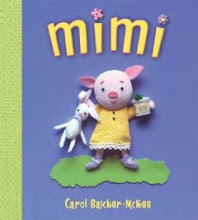This post also appears on my group writing blog, Route 19 Writers. |
| Illustration by Arthur Rackham for Wagner, Richard (translated by Margaret Amour) (1911). Siegfried and the Twilight of the Gods. London: William Heinemann, New York: Doubleday. Public domain image obtained through Wikimedia Commons via Haukurth |
They sometimes emerge from these battles a bit singed or bloodied, but emerge they do.
Then a few years ago, another threat quietly crept into the children's book world and threatened catastrophe, especially for libraries and fans of vintage books. In 2008, in the wake of recalls of popular toys (made in China) for high lead levels, Congress nearly unanimously passed a law intended to protect children: the Consumer Product Safety Improvement Act (CPSIA). This law, among other things, required that ALL children's products aimed at kids 12 and under be tested and certified to be (basically) lead-free. Lead is a known neurotoxin and children are especially vulnerable.
Sounds like a good idea, right? Well, the devil is in the details, and unfortunately the law failed (among other flaws) to exempt zillions of products that pose no significant threat to children. Like books. Which have NEVER been implicated in a single case of lead poisoning.
Not only did the law require expensive testing of each of the components of new books (which would have driven up the cost with no increased benefit to kids), it was retroactive, requiring testing and certification of previously published books. Here's why this was terrible for libraries and used books:
- Testing is terrifically expensive (and hard to obtain) and libraries and used sellers were required to test every children's book in their collections or for sale.
- The mandated testing is destructive testing - which means after submitting a book for testing, the library or bookstore would no longer have the book to circulate or sell.
Fearing lawsuits, some libraries and many used sellers did remove older books from their shelves. But the reason your local library may not have a nearly empty children's department is that the CPSC has issued a variety of stays of enforcement and temporary exemptions (plus there are bunch of feisty and renegade librarians out there) - but all these stays and exemptions were set to expire at the end of this year. And every attempt to amend the law or repeal it has failed.
Until this week!
Here's the start of the announcement of the amended law in Publisher's Weekly (written by Karen Raugust who has done a terrific job of covering CPSIA book developments for PW):
On Monday, three years after the August 2008 enactment of the Consumer Product Safety Improvement Act, publishers of ink-on-paper books and other printed materials suddenly received news they’d been hoping for from the outset. Both the House and Senate passed an amendment to CPSIA that exempts “ordinary” children’s books, along with a few other classes of products (e.g., all-terrain vehicles and motorcycles), from the law’s testing provisions.
It also removes the retroactive provisions of the original law, so old books are officially safe again!!! You can read the rest of the good news here.
Children's books win again!
Sadly, for people who care about kids, the battle to make CPSIA reasonable and effective is far from over. Many, many safe and valuable products were given no relief, including original wall art for kids, small batch handmade toys and apparel (made with all safe components), limited batch items aimed at kids with special needs, and many, many more. Get in touch with your congress-folk and let them know you want further changes! You can read more about how the law affects other products here on the blog of a producer of quality educational products for kids; warning: Rick Woldenburg who writes the blog is angry. Understandably.
I'll leave you with images of a lovely vintage book now spared from the toxic waste dump: Ameliaranne Keeps Shop, "Told in Words by Constance Heward; Told in Pictures by Susan Beatrice Pearse" as it says on the title page. My copy was published in 1928 by David McKay Company, and the story about the kind and resourceful Ameliaranne is as charming and fun to read now as I expect it was nearly a century ago.
Isn't it gorgeous? And though a few of the Ameliaranne stories are available as downloads, what a shame it would be to miss the visceral experience of holding this beautiful small book! And smelling it - it has a wonderful scent of bookcloth, glossy paper, and time. And love.
Because who could not love Ameliaranne? In this tale, she has to think on her feet and figure out how to thwart a nepharious imposter trying to make off with the shopkeeper's money.
Fortunately she is as clever as she is good-hearted.
It all works out! For Ameliaranne, the shopkeeper, and Ameliaranne's young siblings who want to go the picnic but need new shoes which their washerwoman mama can't afford.
Even the endpapers are breathtaking.
It is exceedingly hard to track down information about the authors and illustrator of these books, but you can read a little more about the series of Ameliaranne books on Jane Moxey's lovely blog Moxey's Musings here and find a list of all the Ameliaranne titles (which were written by a variety of authors but always illustrated by Susan Beatrice Pearse) on a Fairacre Wikia page here.
I'm jumping for joy!
























